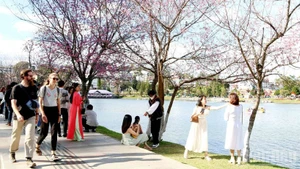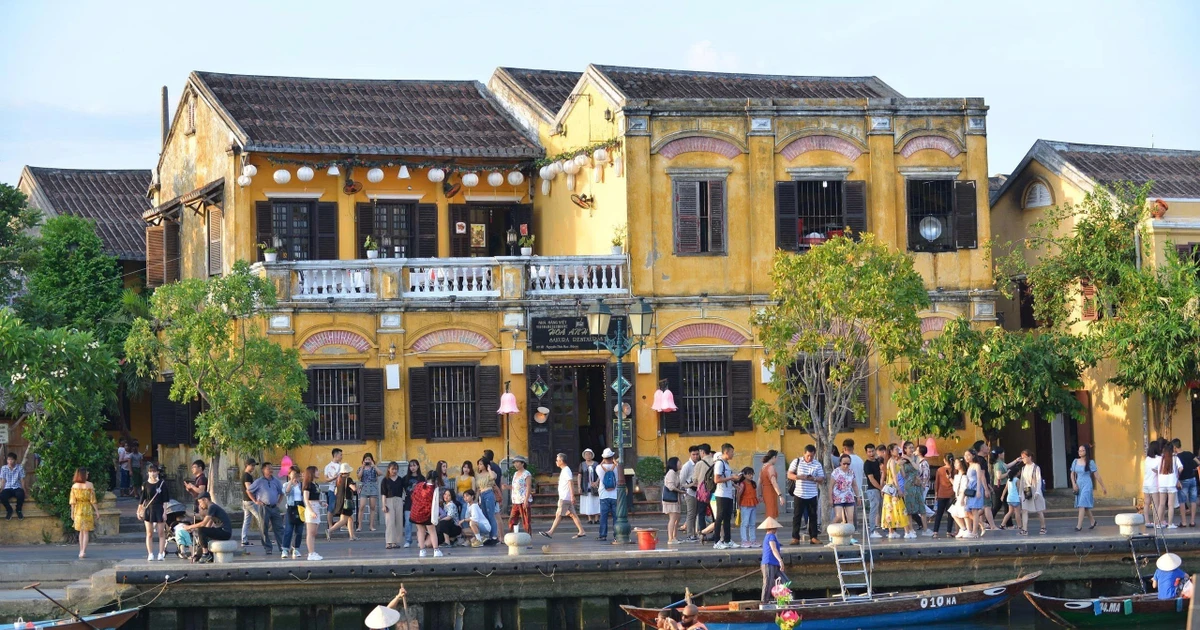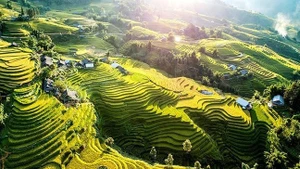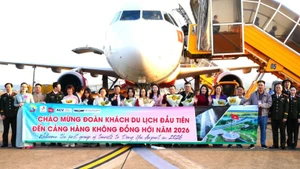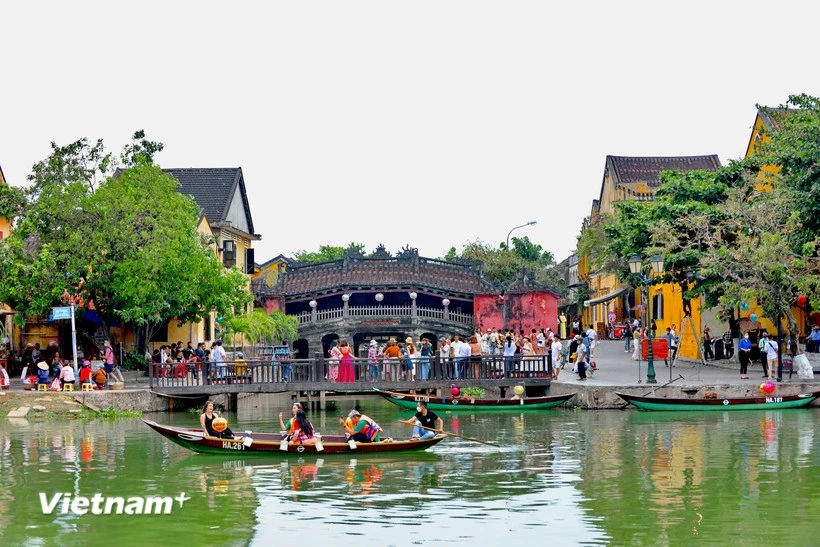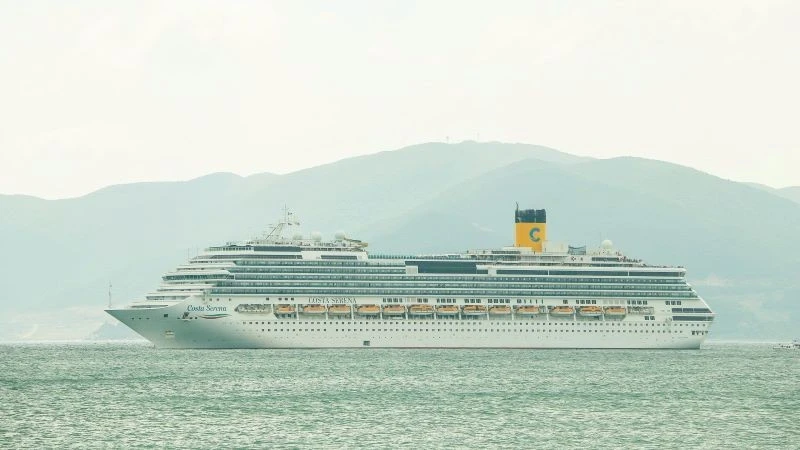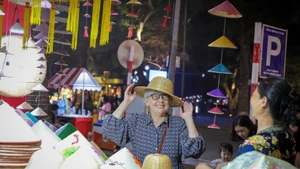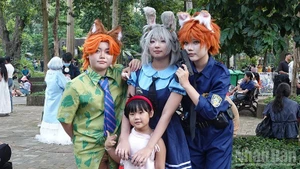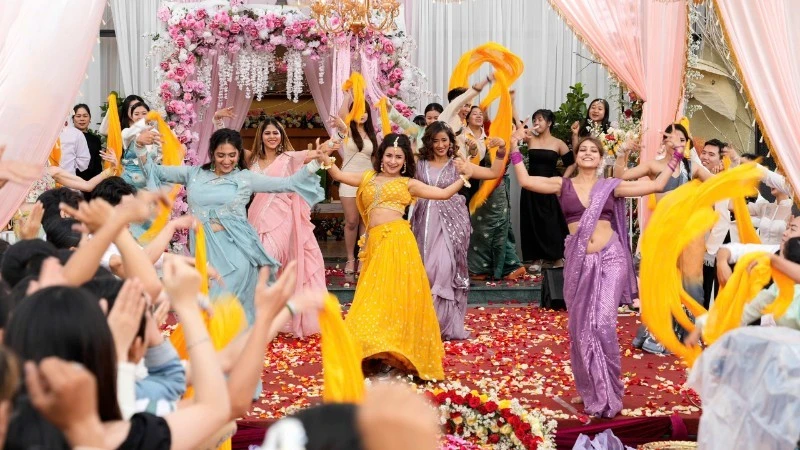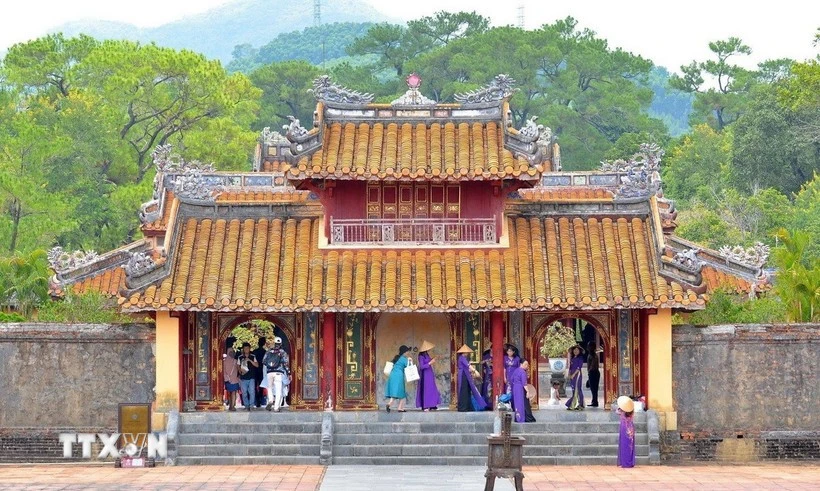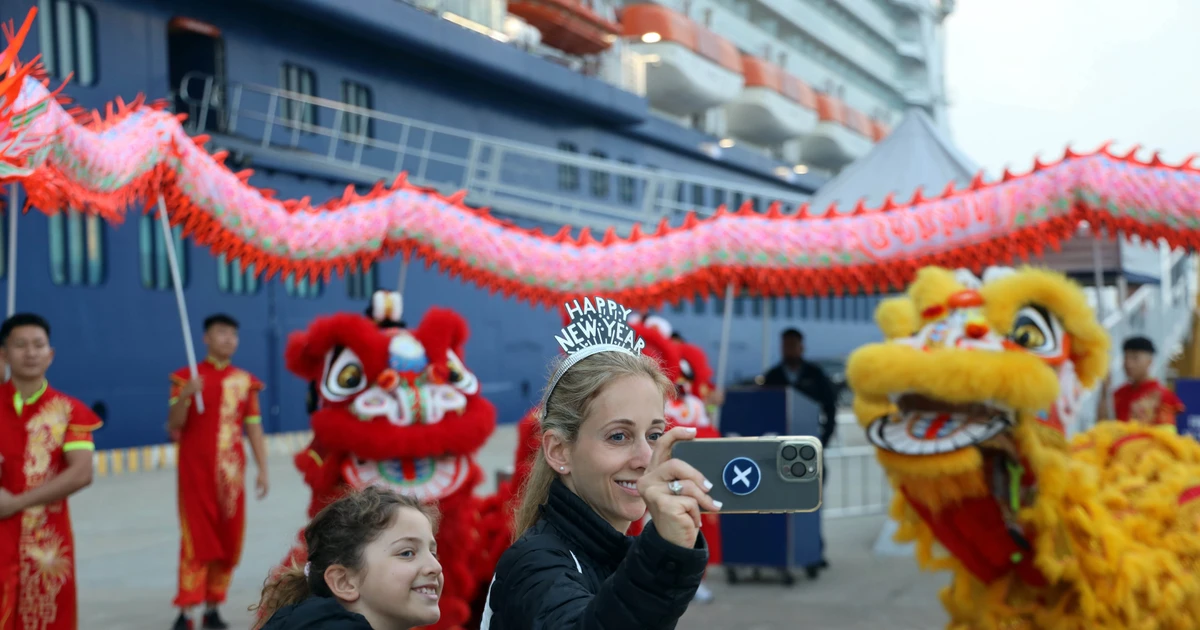A blaze of brocade colours
The most striking impression of Muong Khuong market is its kaleidoscope of colours, created by the traditional costumes of ethnic minorities from remote villages. There are the vivid hues of brocade, the humble indigo, and the gentle shades of purple. Each ethnic group brings its own distinctive colour palette, forming a vibrant and unique marketplace.
Young H’Mong women come to the market in flared multi-layered skirts, wide-sleeved blouses, belts, aprons, leggings, headscarves, and silver jewellery. Meanwhile, Giay girls wear long, elegant tunics in shades of red and bluish-green, adding to the diverse spectrum.
According to the Muong Khuong market management board, this is the largest wholesale centre for brocade in Lao Cai province. The market has a dedicated brocade area with more than 50 households engaged in tailoring, embroidery, production, and trade. Each stall is equipped with sewing and foot-pedal embroidery machines, allowing for on-the-spot alterations and designs, making it more dynamic than the displays at Sa Pa or Bac Ha markets.
At stall No. 3 in the brocade section, H’Mong trader Ly Thi Chu and her husband have been in business for 15 years. Their family specialises in weaving, embroidering, and selling the traditional costumes of local ethnic groups. A full outfit, including skirt, front and back apron, belt, and beadwork, is painstakingly hand-embroidered, pushing the price up to around 1.8 million VND on average, with premium sets costing as much as 2.2 million VND.
Pointing to young women eagerly choosing dresses, Chu explained that many are brides-to-be shopping with their mothers in preparation for their wedding day. On a regular market day, she may sell only a few sets, but in the run-up to festivals or New Year, sales can reach ten or more a day. Beyond retail, her brocade products are also ordered from the Central Highlands and Ho Chi Minh City, and even exported to the United States and parts of Europe.
Fashion designer Ha Linh from Ha Noi said she was captivated by the unique designs and motifs of the ethnic women’s costumes on display. Once back in Ha Noi, she plans to create modernised dresses inspired by these styles to showcase in her fashion boutiques in the capital and in Ho Chi Minh City.

A treasure trove of mountain produce
Muong Khuong is a land where almost every local product is considered a delicacy. From the fragrant, tiny-grained seng cu rice, and the region’s distinctively hot and aromatic chilli, to Muong Khuong oranges, Ban Lau pineapples, Pha Long bananas, and the famed black chicken and black pig—each carries a reputation for quality.
Autumn is not the season for oranges, bananas, or pineapples, but it is peak chilli season. At a corner of the market near Na Bu Street, half a dozen women sit around a heap of chillies, working as hired hands for chilli processing workshops.
Giang Dung Se, from Ban Lau commune, explained: “When other crops are out of season, I come here to pick through chillies, removing stalks and spoiled fruit for the chilli mills. It’s simple, light work, but the pay is modest, around 30,000 VND –35,000 VND for 10 kilogrames. On a good day, I can make over 100,000 VND.”
Other stalls sell an array of medicinal herbs such as notoginseng buds, notoginseng roots, cinnamon, star anise, and traditional remedies of the local ethnic communities. These attract visitors seeking gifts or natural health remedies.
According to Nguyen Van Dung, head of the Muong Khuong market management board, around 200 households trade at the market regularly, but on the main Sunday market day the number rises sharply. Visitor numbers can reach several thousand, ranging from nearby communes to buyers from Lao Cai city and even Hanoi.
After nearly a decade managing the market, Dung said operations generally run smoothly with no major incidents such as fires or explosions. However, the large grounds, four entrances, and surrounding roads make maintaining security and order difficult, especially on Sundays. The market also lacks a car park and a dedicated livestock trading area, complicating zoning and service fee collection.
Lao Cai is home to many famous upland markets: Can Cau, Y Ty, Bac Ha, Lung Phinh, Coc Ly, and Ta Phoi, each with its own landscape, products, and cultural hues.
Many observers believe that with proper planning, sustainable investment, and the careful preservation of traditional spaces, upland markets such as Muong Khuong could evolve into modern trading hubs. They would not only serve as major distribution centres for agricultural specialties and rare brocade fashions across Lao Cai, the Northwest, and beyond, but also retain their distinctive traditional character and cultural charm.

